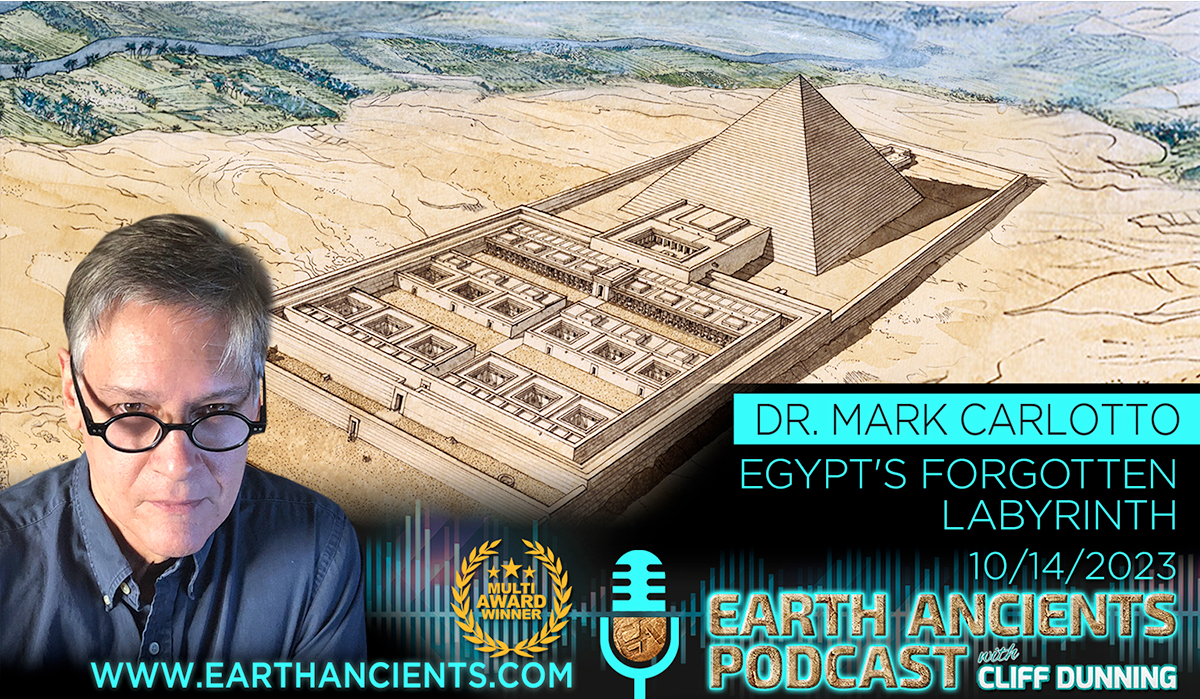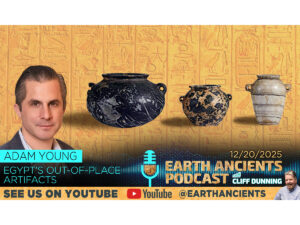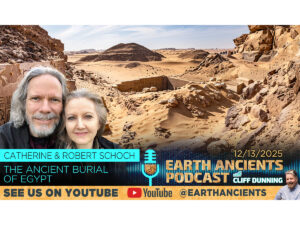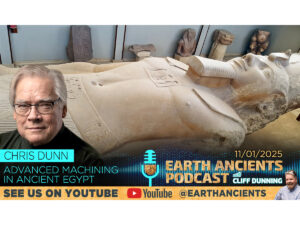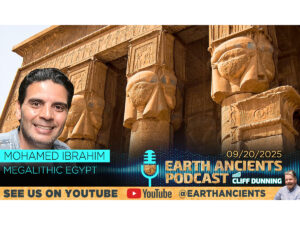Dr. Mark Carlotto: Egypt’s Forgotten Labyrinth
The legendary Labyrinth of Hawara was brought to the attention of the Western world by Herodotus in the fifth century BC. He describes an above-ground structure that he saw, and one below-ground that he was denied access to by the Egyptians.
Moreover, they decided to preserve the memory of their names by a common memorial, and so they made a labyrinth a little way beyond lake Moeris and near the place called the City of Crocodiles. I have seen it myself, and indeed words cannot describe it; if one were to collect the walls and evidence of other efforts of the Greeks, the sum would not amount to the labor and cost of this labyrinth. And yet the temple at Ephesus and the one on Samos are noteworthy. Though the pyramids beggar description and each one of them is a match for many great monuments built by Greeks, this maze surpasses even the pyramids. It has twelve roofed courts with doors facing each other: six face north and six south, in two continuous lines, all within one outer wall. There are also double sets of chambers, three thousand altogether, fifteen hundred above and the same number under ground. We ourselves viewed those that are above ground, and speak of what we have seen, but we learned through conversation about the underground chambers; the Egyptian caretakers would by no means show them, as they were, they said, the burial vaults of the kings who first built this labyrinth, and of the sacred crocodiles. Thus we can only speak from hearsay of the lower chambers; the upper we saw for ourselves, and they are creations greater than human. The exits of the chambers and the mazy passages hither and thither through the courts were an unending marvel to us as we passed from court to apartment and from apartment to colonnade, from colonnades again to more chambers and then into yet more courts. Over all this is a roof, made of stone like the walls, and the walls are covered with cut figures, and every court is set around with pillars of white stone very precisely fitted together. Near the corner where the labyrinth ends stands a pyramid two hundred and forty feet high, on which great figures are cut. A passage to this has been made underground.
Mark Carlotto is an aerospace engineer with over thirty years of experience in satellite imaging, remote sensing, image processing, and pattern recognition. He received a Ph.D. in Electrical Engineering from Carnegie-Mellon University in 1981 and has published numerous technical articles and books. Dr. Carlotto contributed extensively to the investigation of the Face and other structures in the Cydonia region of Mars, analyzed anomalous objects in STS-48 and STS-80 space shuttle videos, and participated in a recent study of unusual surface features on the far side of the Moon. In his latest book, Before Atlantis, Mark Carlotto draws from his unique background and experience to propose new answers to basic questions concerning human origins, ancient technology, and archaeological enigmas.


